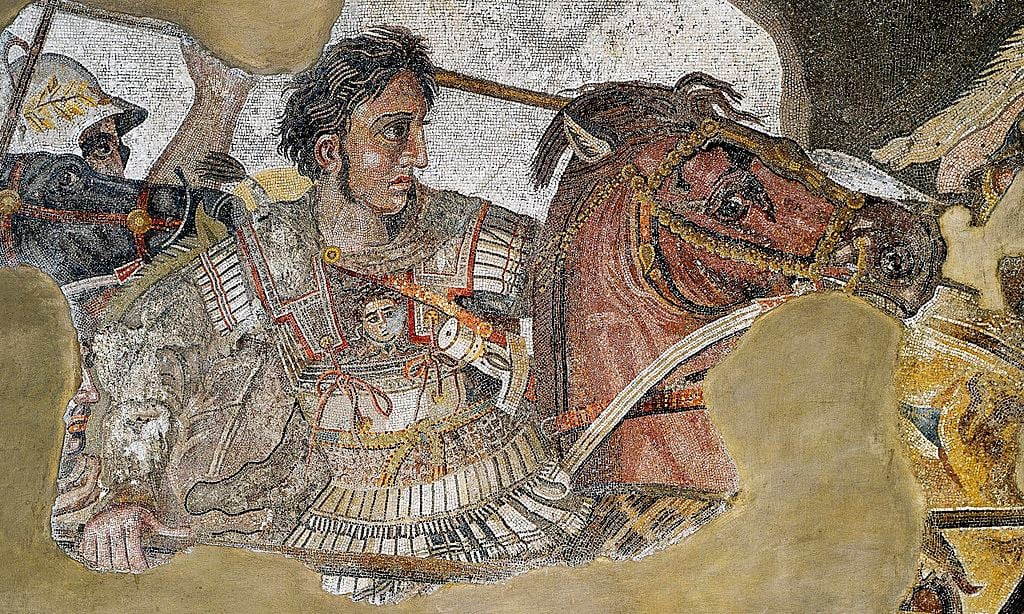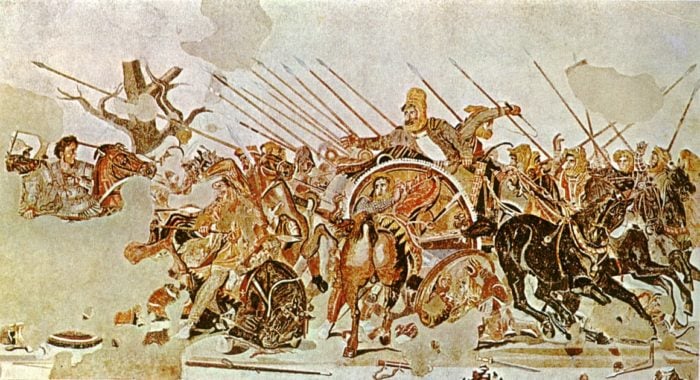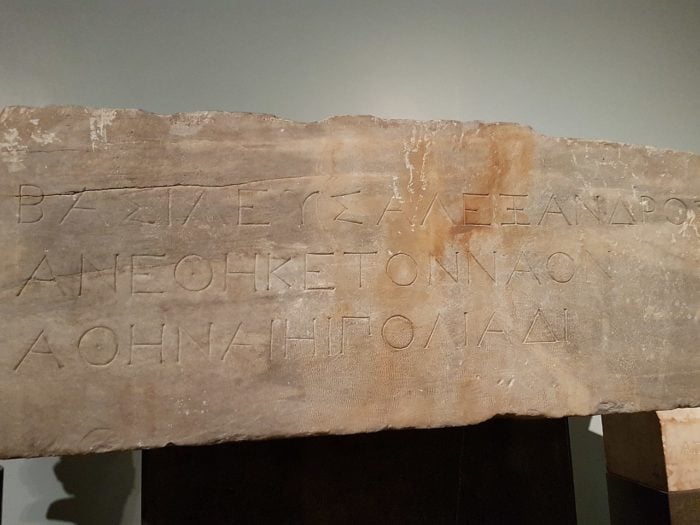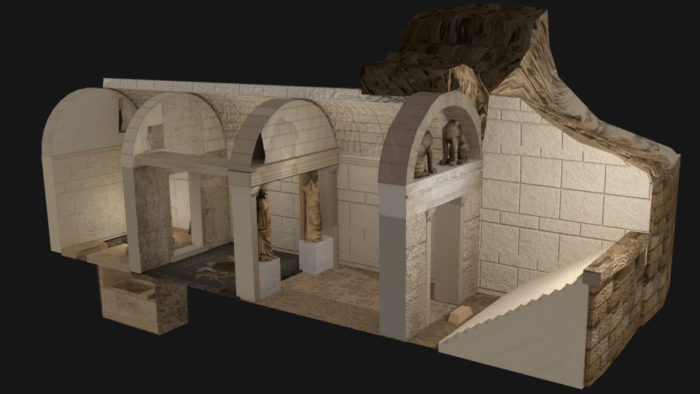
For over 2,300 years, researchers and historians have been trying to locate Alexander the Great’s Tomb, which remains one of the world’s greatest mysteries even to this day.
There are several attestations that go back to the Roman era, as historians of the time recorded the visits made by Roman emperors to the great general’s tomb in Alexandria.
It is natural for many to believe that the great Greek military genius and conqueror of Asia would wish to be buried in the city that bears his name.
Yet, for centuries now, theories abound about the location of Alexander the Great’s Tomb, with some verging on myth.
Most recently, an Egyptian tourism official reported on supposed evidence suggesting that the discovery of the famed tomb might be in the Siwa Oasis in the Marai area.
There was a shrine there devoted to the chief Egyptian God Amun, whom the Greeks called Ammon and equated with their god Zeus. It was indeed Alexander’s favorite place.

First burial in Memphis
According to the historian Pausanias and the contemporary Panan Chronicle records for the 321-320 BC period, Ptolemy, one of Alexander’s generals, initially buried him in Memphis, Egypt.
In the late 4th or early 3rd century BC during the early Ptolemaic dynasty, Alexander’s body was transferred from Memphis to Alexandria, where his sarcophagus was placed in the Serapeum complex, built by Pharaoh Nectanbo II.
Alexandria is considered by most to be the actual location of Alexander the Great’s Tomb.
Roman emperors visit the tomb in Alexandria
Several Roman emperors acknowledged the greatness of the Greek conqueror of Asia and professed their admiration for his feats, according to contemporary historians.
Julius Caesar visited Alexander the Great’s Tomb in Alexandria in 48 BC, paying his respects.
Later, Queen Cleopatra took gold from the tomb to finance her war against the Roman emperor Octavian.
Following Cleopatra’s death, Augustus visited Alexander’s burial place in Alexandria. He was said to have placed flowers on the tomb and a golden diadem upon the general’s head.
Another historian of the Roman era wrote that Caligula visited the tomb of Alexander the Great and took his breastplate.
In 199 AD, Septimius Severus visited the tomb in Alexandria and ordered that it be sealed in order to stop ongoing looting.
In 215 AD, items from Alexander’s tomb were relocated by Caracalla, who removed Alexander’s tunic, his ring, his belt and some other precious items and deposited them on the coffin.
A tsunami in 356 AD inundated the city after a series of earthquakes, resulting in rising sea levels. The waters of the Nile Delta caused Alexandria to slowly sink as much as twelve feet since Alexander’s time.
In essence, the burial ground of Alexander must have sunk quite deep into the seabed by now, along with much of the ancient city, on top of which the modern city is located.

Egypt as the burial ground of Alexander the Great
While the common belief is that the tomb of Alexander the Great is in Alexandria, 140 separate, fruitless attempts to locate it have been recorded by the Egyptian Supreme Council for Antiquities.
These attempts have generated several theories as to the exact spot where Alexander lies—the oldest one being that the tomb is in the center of the ancient city.
Several scholars of the 19th century, such as Tasos Neroutsos, Heinrich Kiepert, and Ernst von Sieglin agreed to this theory.
In 1850, Ambroise Schilizzi announced the discovery of Alexander’s supposed mummy and tomb inside the Nabi Daniel Mosque in Alexandria. Yet, no permission to excavate was given, nor was it granted later.

The Venetian theory
There is even a theory that places Alexander the Great’s tomb in Venice and, specifically, in the city’s St. Mark’s Cathedral.
The theory is dismissed by several scholars as being far-fetched with many religious undertones.
According to the particular supposition, when the Arabs took over Alexandria, they wanted to rid the city of anything pre-Islamic, so the burial place of Alexander—who had been worshipped as a god—would have to go.
Alexandria was also the last resting place of Mark, one of the four Christian Gospel writers, who is Venice’s patron saint.
A variation of the Venice theory has Venetian merchants stealing Alexander’s remains, believing them to belong to Saint Mark the Evangelist, and transferring them to the saint’s Basilica in Venice.
Dr. Andrew Michael Chugg, who wrote the book The Lost Tomb of Alexander the Great seems to adapt the theory based on a piece of sarcophagus of the pharaoh Nectanbo II.
Alexander’s original tomb in Memphis was built by Pharaoh Nectanbo II inside the Serapeum complex. The sculptures of Greek poets and philosophers suggest that Alexander the Great’s tomb was inside that complex.
Amazingly, a piece of masonry found in the foundations of Saint Mark’s in Venice matches the dimensions of Nectanbo II’s sarcophagus in the British Museum, indicating that Alexander’s tomb is inside Saint Mark’s tomb under the Basilica.
Since Alexander’s body disappeared in 392 AD, and the tomb of Saint Mark appeared at the same time, Chugg believes that the Venetian merchants stole the body, mistaking it for Saint Mark’s.
Indeed, stranger things have happened in history.

Is Alexander the Great buried in Vergina?
In 1993, Greek archaeologist Triantafyllos Papazois developed the theory that it is not Philip II of Macedon who is buried in the royal tomb II at Vergina, Greece, but it is actually Alexander the Great while his son Alexander IV is buried in tomb III.
Papazois further concluded that the breastplate, shield, helmet and sword found in tomb II belong to the armor of Alexander the Great.
However, the archaeologist’s theory has never been proven.
The mystery of the Amphipolis Tomb
In 2014, Greece and the rest of the world were shaken by the news of the discovery of the tomb of Alexander the Great in Amphipolis in northern Greece.
The large Alexander-era tomb at Kasta hill in Amphipolis once again led to speculation about Alexander’s final resting place. Some have speculated that it was built for Alexander but not used due to Ptolemy I Soter having seized the funeral cortege and turning it away from its initial destination.
The findings on the site led to speculation that it was a memorial dedicated to Alexander’s close friend, Hephaestion.
Andrew Chugg speculated that the tomb belongs to Alexander’s mother, Olympias, or Roxanne, his wife, with the former being the most likely.

Getting closer to Alexander the Great’s tomb
Greek archaeologist Calliope Limneos-Papakosta has made it her life’s mission to find the Holy Grail of researchers, Alexander the Great’s tomb.
The Director of the Hellenic Research Institute of the Alexandrian Civilization, Limneos-Papakosta has been digging for over fifteen years at sites around the Shallalat Gardens, a public park in the heart of Alexandria.
The Greek archaeologist and her team have dug over ten meters (35 feet) under modern-day Alexandria to find the man the city is named after.
Limneos-Paleokosta and her team have found the first roads built in the city, as well as the foundation of an enormous public building over 200 feet long; they believe this area is the ancient royal quarter.
The archaeologist and her team used an elaborate system of pumps to dry up the area so that they could continue to dig.
Limneos-Papakosta’s persistence paid off, adding much-needed optimism to her endeavor: Her team did uncover an early Hellenistic statue bearing hallmarks of Alexander the Great.
The marble statue most definitely depicts “Alexander the Great, the Spear Bearer.” It was created with the same technique of the great sculptor Lysippus—that is, with the head tilted downwards and to the side.
The statue, which is now universally acknowledged to represent the great general, is exhibited at the National Museum of Alexandria.
Perhaps this is proof that we really are closer to the unraveling of the great mystery of the tomb of Alexander the Great than we have ever been before.
However, it is also possible that the great conqueror, who believed he was the son of Zeus, will continue to hide in the depths of history, remaining forever immortal.
See all the latest news from Greece and the world at Greekreporter.com. Contact our newsroom to report an update or send your story, photos and videos. Follow GR on Google News and subscribe here to our daily email!



